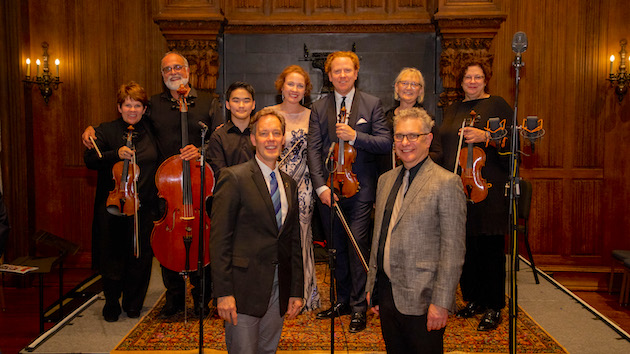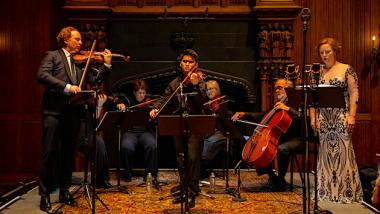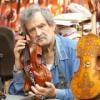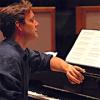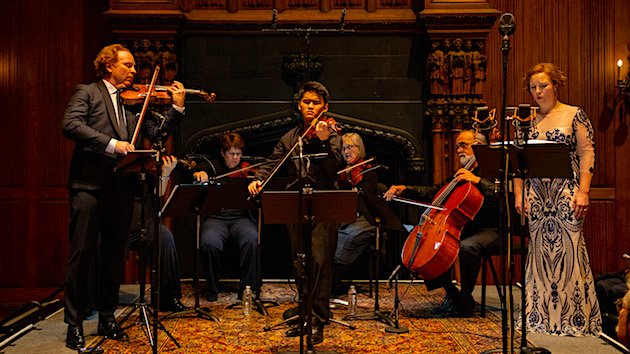
The instruments in the personal collection of Amnon Weinstein can not only make music, but are also works of art in and of themselves. Like many artworks, these instruments have endured well beyond any single human lifetime to express the full spectrum between hope and horror that humanity can dish out.
Weinstein is a second-generation Israeli master violinmaker who amasses and restores string instruments that had been owned by Jews both before and during World War II. His instruments represent the immeasurable death and loss inflicted by the Holocaust. But when played upon still today, they also embody survival, remembrance, and the possibility of hope.
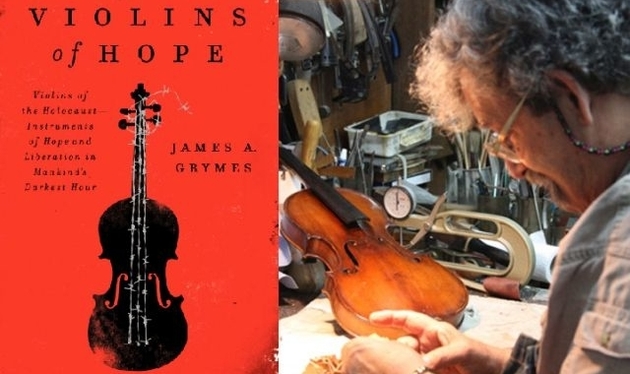
This weekend, Music at Kohl Mansion launched “Violins of Hope” San Francisco Bay Area, an ambitious project involving Weinstein’s instruments, as well as more than 40 partner organizations and several events in eight Bay Area counties over the next two months. Music at Kohl Mansion commissioned a new work for this project, which also commemorates the 75th anniversary of the liberation of Auschwitz. Sunday’s performance culminated with the premiere of this new song cycle by composer Jake Heggie and librettist Gene Scheer. The premiere of Intonations: Songs from the Violins of Hope featured violinist Daniel Hope, mezzo-soprano Sasha Cooke, and a quartet of musicians from the San Francisco Opera Orchestra who played on instruments from Weinstein’s collection.
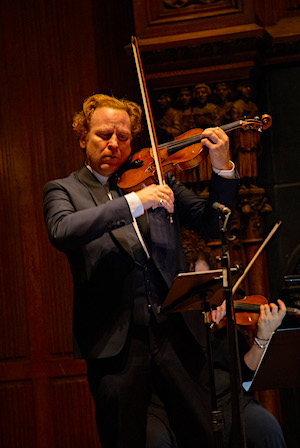
In this deeply compelling concert’s first half, the quartet — violinists Kay Stern and Dawn Harms, violist Patricia Heller, and cellist Emil Miland — performed two 19th-century pieces. Schubert’s so-called “Quartettsatz” is in C minor, a key by which Beethoven, his contemporary, often expressed emotional volatility. Schubert’s movement was also stormy. Then, too, Mendelssohn’s sixth string quartet forcefully raged. Heggie explained that Mendelssohn wrote it upon receiving the news that his beloved sister, Fanny, had died. In short, these two works showcased the wide emotive range of the composers, the instruments, and the performers.
Intonations is scored for a violin and a vocal soloist as well as an accompanying string quartet.
The six songs were rife with exquisitely dramatic melodies for both Hope and Cooke. The quartet stepped into the expressive foreground during an instrumental lament that was a prelude to the final song, “Liberation.” On Sunday, Sean Mori, a disarmingly talented 17-year-old violinist at the San Francisco Conservatory of Music, joined the performers for the final song, thereby offering living proof that music survives even when generations change.
Intonations was partially inspired by a book called Violins of Hope. Its author, musicologist James Grymes, tells the stories of Weinstein’s violins and their owners during the Holocaust.
For the texts of Intonations, Scheer chose six of Grymes’s stories. Each song in the cycle conveys one story — and, intriguingly, conveys it from the perspective of the violin itself. For example, the first line in the fifth song is “Pull the bow across my strings.” The violin relays how an old man, who had lost his entire family, gave the violin to a younger man named Feivel so that Feivel could feed his own family. Feivel’s family survives, whereas the old man commits suicide.
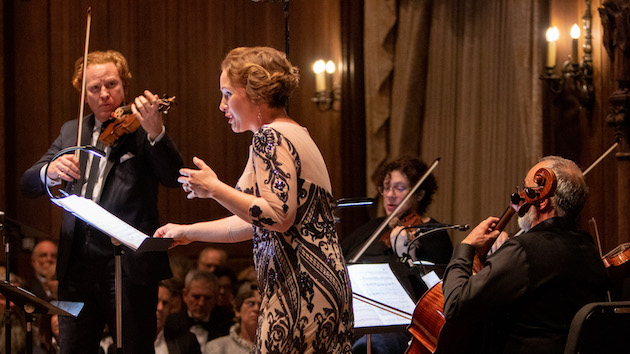
Relaying these stories is powerful partly because, as a whole concept, the Holocaust is almost unfathomable. But Intonations reminds listeners that its victims were real, relatable individuals, each with a family and friends, each enduring suffering and loss, some turning to music for survival: “If I play,” reads a line in the third song, “I will not die today.” This can be taken literally — some musicians played for income or food, and musicians in death camps had better chances for survival because they were useful for entertaining the officers. More abstractly, too, music was a source of solace and of hope. For example, the whole cycle began with these words:
When they told him not to pray
Told him to forget
When they told him not to hope
He played the violin.
The violinist described here was forced to perform as others proceeded to a gas chamber, and as his violin filled with ashes from the adjacent crematorium.
These words and their melody returned, in a truly cyclic structure, to end the final song. Except the text returned in the first-person plural, and no longer in the past tense:
When they tell us not to pray
Tell us to forget
When they tell us not to hope
We will play these violins.
These lines might summarize the Violins of Hope project, as well as this memorable performance that was simultaneously heart-wrenching and inspiring.
